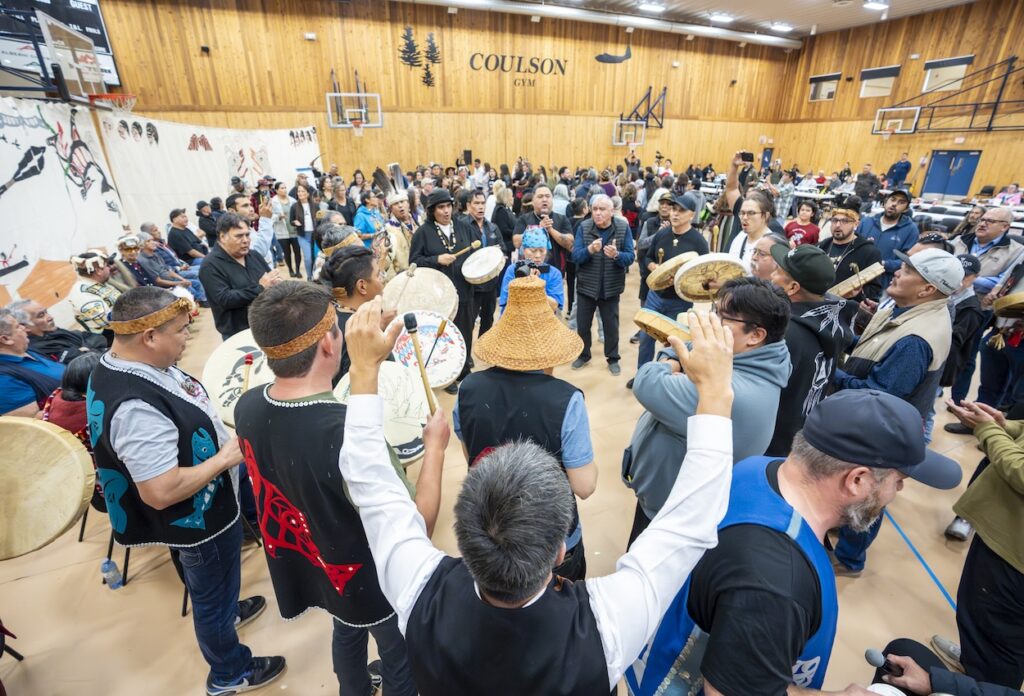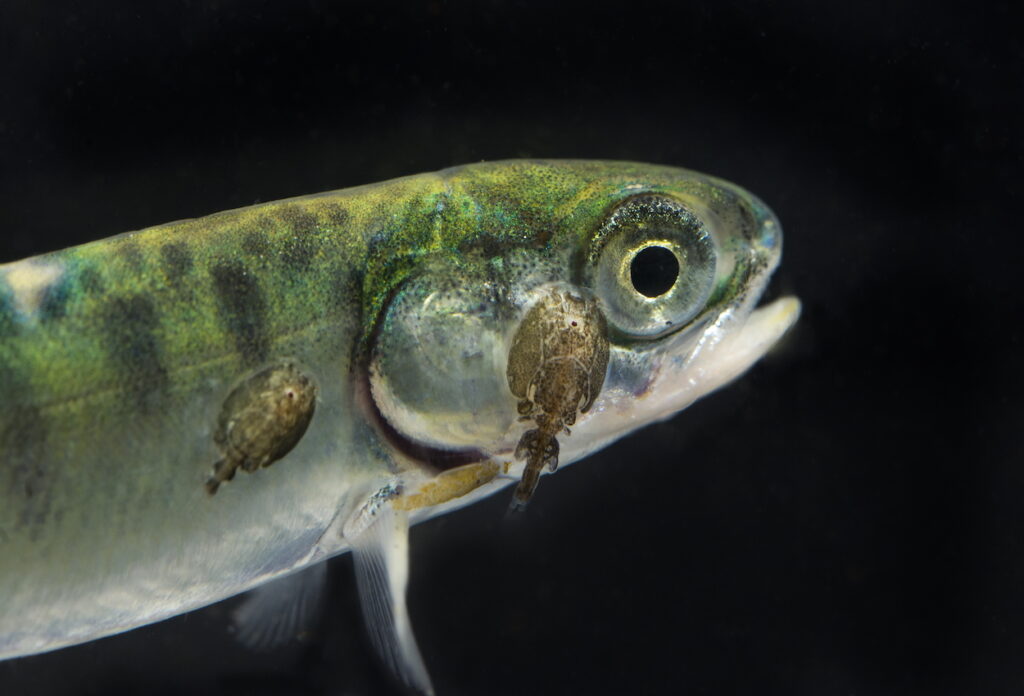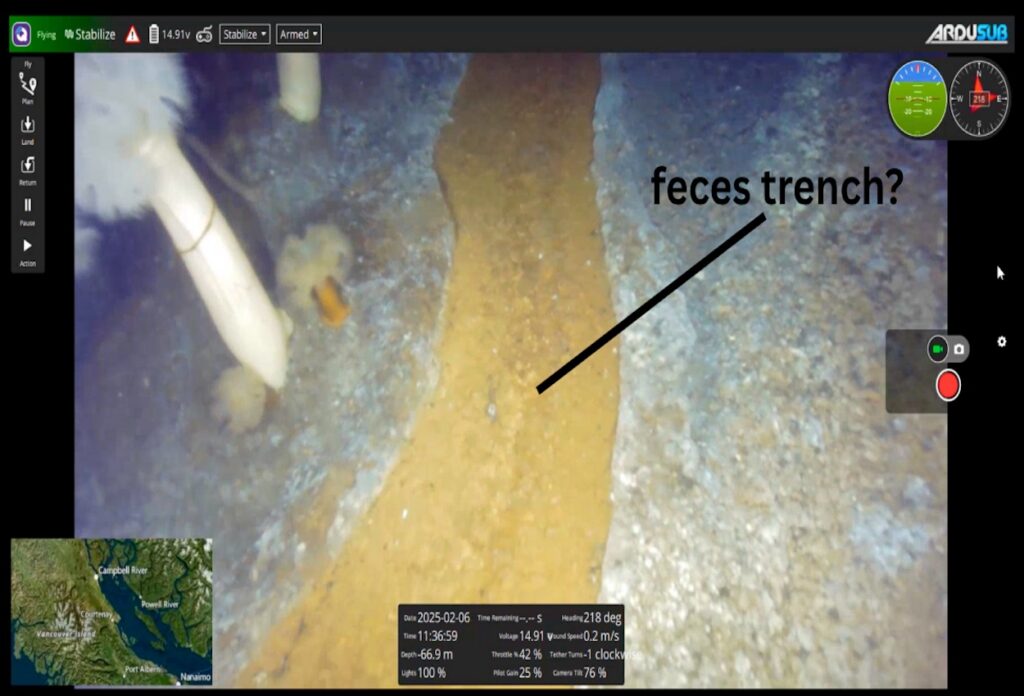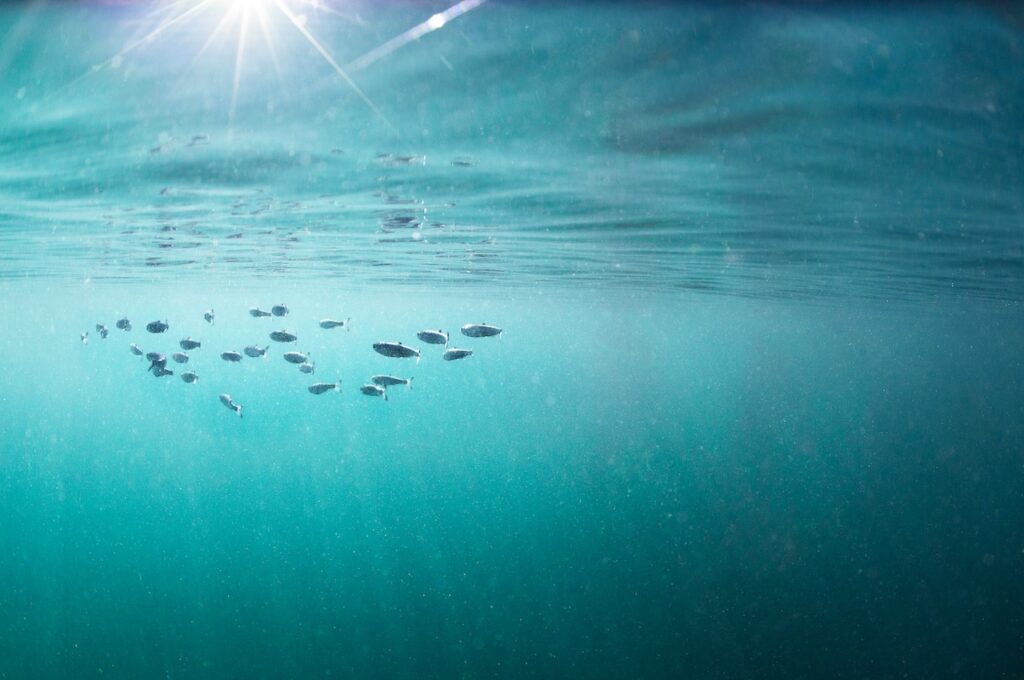A couple of weeks ago, Clayoquot Action heard that Cermaq’s experimental semi-closed fish farm (SCCS) was being towed southward in Millar Channel. We figured it was being towed out of Clayoquot Sound forever.
But a week later, we got word that it had in fact been towed into southern Clayoquot Sound, and was moored at their Mussel Rock site.
We had been watching Cermaq’s operations at Mussel Rock and Millar Channel with curiosity for some time. Why had they removed the open-net pen arrays at Mussel? Why had Cermaq been steadily removing fish from the SCCS during the second trial? And why did the SCCS appear to be empty, only six months into the second trial?
A lack of transparency
Everything Cermaq does seems to be shrouded in secrecy. No wonder—their operations are causing so much harm, they must feel a need to hide the truth from the public, whether members of local Nations, or citizens of Canada.
The same goes for DFO. They do very little to expose the truth about this polluting industry. Instead, they join in attempts to cover up frequent screw-ups, and spend their time developing media responses to messy situations Clayoquot Action uncovers and exposes.
When reading Cermaq’s public statements about their SCCS, it is clear that they are only concerned with profits—ie growing bigger fish faster.
SCCS has never grown market-sized fish
When the first SCCS arrived in British Columbia, Cermaq stated that although they had never grown market-sized fish in SCCS in Norway, they would try to achieve that here in Clayoquot Sound. The plan was to harvest a third of the fish at 600 grams, a third of the fish at 1.5 kilograms, and to let the final third grow to 5.5 kilograms (harvest size).
But their first trial ended in failure. When we requested the final report by Access to Information, we learned that the first trial had been shut down due to a technical failure. To quote Cermaq: “Fish removed due to fish welfare concerns resulting from chronic exposure to higher levels of ammonia”. In layperson’s terms: the fish were breathing their own urine.
The SCCS was re-stocked last fall. We’ve been monitoring closely through the winter months. What we noticed was that Cermaq was moving small fish out of the SCCS into their newly-approved mega-farms. Sure enough, in a recent industry journal article, Cermaq stated that their future plans for SCCS are to transfer 600-700 gram fish to traditional open-net pens for grow out.
Second trial a failure
So was it a success or a failure? It depends on how you define success. If the goal were to develop an alternative system to farm salmon in the ocean without harming wild salmon, clearly both trials were a failure. Because the SCCS does not collect solid waste, it still deposits the equivalent sewage of a city of 150,000 people (and unlike net-pen systems, this poop is all concentrated right beneath the one exit hole at bottom of the bag). And because it doesn’t collect liquid waste, it is still a viral super-spreader like any open-net pen. Because Cermaq claims the system does not have salmon lice, DFO does not require lice data to be made public (if Cermaq is even required to monitor lice at all). Without transparency, the public is kept in the dark—right where Cermaq wants us.
By defining success as growing bigger fish faster and cheaper, Cermaq claims the second trial was a success. From the beginning, their public statements have always made it clear that their agenda has nothing to do with protecting wild salmon. Their goal is always to increase profits.
SCCS still needs open-net pens
As reported by Living Oceans Society last fall, SCCS have never been used to grow market sized fish, anywhere in the world. They will always need open-net pens for grow-out to adult size. These systems are best for fast-tracking small fish to create super-smolts, which are then able to grow bigger faster.
Now Cermaq has proved this on the ground in Clayoquot Sound. What the industry is proposing with the false solution of semi-closed containment is to grow more fish faster. A future of SCCS would result in the continued use of obsolete open-net pen technology. It would also result in more fish being grown in BC waters, so more release of pathogens and parasites.
As Cermaq stated in 2020, “The one thing we do need is time”. Indeed, this is exactly what DFO captured from industry in their What We Heard Report: “Transition timelines need to account for the time required for innovation processes, or experimental failures”. Industry is also asking for “Longer licences to ensure business stability to innovate”. In other words, they want to lock in obsolete open-net pen technology in longer licenses while they tinker with technology trials that, even if they were to succeed, will do nothing to protect wild salmon.
Wild salmon don’t have time to wait
Meanwhile, Fisheries Minister Joyce Murray acknowledges that “Wild salmon are in dire straits…a number of research papers have shown that these parasites and pathogens do create disease conditions in the fish…Any extra stressor on those salmon that we do have control over needs to be managed…when it comes to protecting and restoring BC’s wild salmon, failure is just not an option”.
The DFO has extended their consultation period through to the end of summer. This is not a time to stand by idly as wild salmon are pushed to the brink of extinction by the salmon farming industry. Be sure to make your voice heard—it only takes a minute using our online petition. Join the growing chorus of people calling for all salmon farms to be removed from BC waters by 2025!
Dan Lewis is Executive Director of Clayoquot Action.






